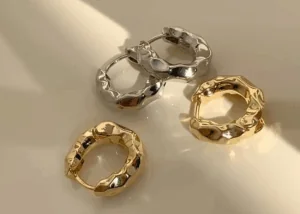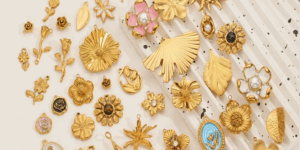Explore the role of stainless steel in crafting sustainable jewelry, and its impact on the environment and the fashion industry. Delve into the process of production, its life cycle, the recycling potential, and why it’s a preferred choice for sustainable fashion.
Sustainability is the clarion call of the 21st century. As we become more aware of our planet’s finite resources and environmental challenges, consumers and producers alike are seeking sustainable alternatives in all domains, including jewelry. Stainless steel, known for its durability and resistance to tarnishing, presents an interesting proposition as a sustainable material for jewelry. This in-depth exploration shines a light on stainless steel jewelry’s sustainability and its role in the eco-friendly fashion landscape.
1: What Makes Stainless Steel Sustainable?** Stainless steel ticks many boxes on the sustainability checklist. It is durable, long-lasting, and resistant to corrosion and rust, which means jewelry made from stainless steel has a prolonged lifespan, reducing the need for replacement and, hence, consumption. Additionally, stainless steel jewelry is hypoallergenic, promoting not just ecological but personal health as well.
2: Production Process and Environmental Impact** A significant aspect of the sustainability of any product lies in its production process. The production of stainless steel involves the extraction and refining of iron ore and chromium – both abundant elements on earth. While this process does have an environmental footprint, many stainless steel manufacturers have taken significant steps towards reducing it by improving efficiency, recycling waste, and switching to renewable energy sources for power.
3: Lifespan of Stainless Steel Jewelry** Stainless steel jewelry offers a long lifespan due to its resistance to rust, corrosion, and tarnish. Unlike some materials, stainless steel does not fade or change color over time, meaning it keeps its aesthetic appeal for years, reducing the need for frequent replacement.
4: Recycling Potential of Stainless Steel** One of stainless steel’s standout sustainability features is its recyclability. Stainless steel can be melted down and reformed without losing any of its qualities. This means that even when a piece of stainless steel jewelry reaches the end of its life, it can be completely recycled, creating a closed loop of use and reuse.
5: Stainless Steel and Sustainable Fashion** As the fashion industry strives for sustainability, stainless steel has become an increasingly popular choice for jewelry. Its versatility, longevity, and recyclability make it an environmentally friendly choice that aligns with the principles of slow fashion. Furthermore, its modern, sleek aesthetic appeals to the tastes of contemporary consumers.
**Conclusion** In an era where sustainability is of paramount importance, stainless steel jewelry proves to be an environmentally sound choice. From its production process to its potential for recycling, the sustainability benefits are clear. By choosing stainless steel, consumers and manufacturers are not only contributing to the creation of beautiful, durable jewelry but also to the preservation of our planet for future generations.





